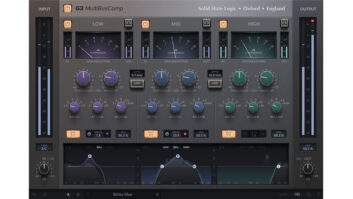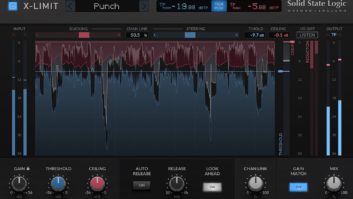Craig Anderton Change can be difficult, but ultimately worth it. I don’t think anyone running OS X is nostalgic for System 9, nor do users of 64-bit Windows want to abandon access to virtually unlimited RAM. Yet both changes obsoleted some software and hardware, required driver updates and users were often left in an awkward position when some companies made the transition faster than others.

We’re seeing something similar happen with plug-ins as 64-bit computing becomes firmly established. Microsoft and Apple took different paths; Redmond went for the option to use both 32- and 64-bit programs during the transition to full 64-bit operation, while Cupertino took a more stealth approach that transitioned over time—but the end result has affected how we use plug-ins.
At a PreSonuSphere conference, one Windows user mentioned going from the 32-bit version of Studio One Pro to the 64-bit version, and wanted to know the best solution for using 32-bit plug-ins. The answer from one of the program’s developers was straightforward: Ask the plug-ins’ manufacturers to develop 64-bit versions.
Fortunately, many have. But the reality is some 32-bit plug-ins will never transition to 64 bits. Bridging technology can help 64- bit Windows hosts; BitBridge and jBridge give most (but not all) 32-bit plug-ins a new lease on life. There are also “wrappers” for different formats. For the Mac, FXpansion’s VST-to-AU wrapper is still available for owners of older Macs, but it’s now considered a legacy product. Their VST-to-RTAS wrapper remains a current product for Pro Tools 7 to 10 (Windows or Mac), but Pro Tools 11 runs 64-bit AAX plug-ins only.
Speaking of AAX, when it was first announced, there were concerns about updates, pricing and so on that have largely turned out to be unfounded. Manufacturers have gotten on board in terms of availability, and many have been generous with their upgrade policies. I believed at the time AAX was a necessary move for Pro Tools to transition into the 64- bit world, and in retrospect, Avid made the right decision to create a foundation with a future.
On the other hand, we also have zombie formats. Microsoft apparently lost interest in DirectX a long time ago, and the format has been all but abandoned for new products or even further development (apart from some companies updating DirectX plug-ins for 64-bit operation). Steinberg Cubase dropped support for DirectX back in version 4, although Sony’s pro audio and video products, as well as Magix Samplitude, Cakewalk Sonar, Acoustica Mixcraft, Cockos Reaper and others continue to support it. Why? Despite their age, there are still useful DirectX plug-ins and legacy support is needed for older projects. Although DirectX is among the undead, it’s probably not going away anytime soon for programs that support it because the longer it stays supported, the longer people will use DirectX plug-ins and therefore continue to require support.
Then there’s VST3, which was slow to gain traction—in part because it was a victim of the success of VST 2.4 (which worked very well) and partly because the spec bears little resemblance to VST2. So, there was a chicken-and-egg situation: Hosts didn’t want to support VST3 until there were more VST3 plug-ins, and plug-in manufacturers didn’t want to make VST3 plug-ins until more hosts supported it. It was also controversial because some developers felt most of these changes could have been integrated into VST2, but the motive for starting with a new code base for VST3 was similar to how Pro Tools handled AAX—a foundation for future development. VST3 is a forward-looking protocol that is even intended to accommodate changes in the MIDI spec, should that happen.
Potentially, VST3 does offer several advantages: easy disconnection from the host when silent; sample-accurate automation; plug-in categorization and hierarchies; support for multiple MIDI output ports and generally more flexible I/O; better parameter organization (helpful with automation menus); and overall more efficient operation. But I said “potentially” because the host has to decide which aspects of the VST3 spec to implement, so not all features are available on all hosts. However, there’s a sense that a transition to VST3 is inevitable; while there are some tradeoffs for developers, ultimately most manufacturers are putting their development efforts into VST3.
After a period of change, it looks like the plug-in world is stabilizing to accommodate new realities in computing. Then again, who knows what tomorrow will bring….
Author/musician Craig Anderton has given seminars on technology and the arts in 38 states, 10 countries, and in three languages.







